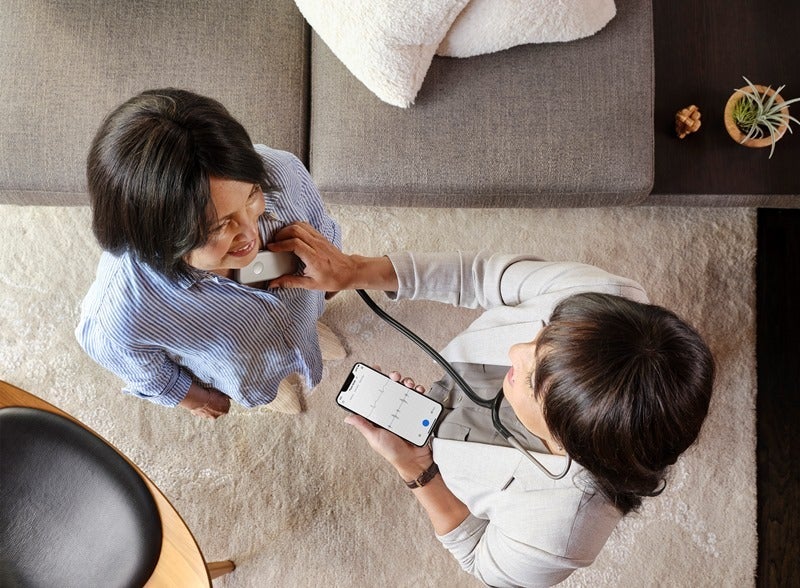
Eko, a digital health firm, has secured the US Food and Drug Administration (FDA) breakthrough status for its ECG-based algorithm, designed to offer an easily accessible screening test for heart failure.
The company is engaged in developing software, devices, and analysis algorithms by applying artificial intelligence (AI), to offer in-clinic heart disease screening, telemedicine, and monitoring patients at home.
Eko CEO and co-founder Connor Landgraf said: “The Breakthrough Device designation recognizes the vast unmet clinical needs in identifying heart failure early in patients, whether it be due to cost, inaccessibility, or misdiagnosis.
“We look forward to working with the FDA to bring this algorithm to patients and to give clinicians a new tool to screen for low ejection fraction.”
The new algorithm from Eko analyses ECG data in 15 seconds during a physical exam
According to the company, Heart failure is most commonly detected by echocardiogram imaging tests, and is usually diagnosed late, due to limited access to echocardiography.
In addition, echocardiogram imaging tests are usually not conducted during a physical exam, and late diagnosis of heart failure would make the treatment more challenging.
Eko claimed that the new algorithm analyses ECG data collected from the Eko DUO digital stethoscope during a physical exam within 15 seconds, and identifies reduced left ventricular ejection fraction (LVEF), which is commonly used for diagnosing patients with heart failure.
The company has partnered with the Mayo Clinic to develop a deep neural network, which is used by the new algorithm.
Furthermore, the clinical studies conducted at Mayo Clinic demonstrated that the DUO, in combination with the AI algorithm would detect ejection fraction less than 35%.
Mayo Clinic department of cardiovascular medicine chair Paul Friedman said: “A low ejection fraction means that the heart pump is weak, which can lead to shortness of breath, swelling, exercise intolerance, or sudden death, so it is important to identify, as many treatments exist.
“This technology gives physicians a tool to detect heart disease earlier, and before it develops into a more serious illness. In effect, by imbedding the technology in a commonly used clinical tool – the stethoscope – all caregivers carry some of the diagnostic prowess of an expert cardiologist with them.”






